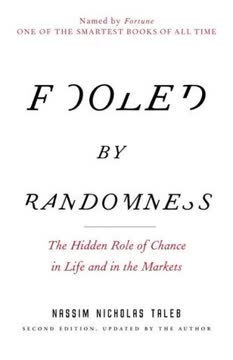Key Takeaways
1. The era of emerging markets rising together is over; individual country performance will diverge
"The unthinking faith in the hot growth stories of the last decade also ignores the high odds against success."
End of synchronized growth. The exceptional period of 2003-2007, when nearly all emerging markets grew rapidly together, is unlikely to be repeated. Future growth will be more uneven, with some countries thriving while others stagnate or decline. This divergence will be driven by factors such as:
- Differences in economic policies and reforms
- Varying levels of competitiveness and innovation
- Dependence on commodities versus manufacturing or services
- Quality of institutions and governance
Importance of individual analysis. Investors and policymakers must now evaluate each emerging market individually, rather than treating them as a homogeneous group. This requires:
- Understanding the unique economic, political, and social factors of each country
- Assessing the specific challenges and opportunities they face
- Recognizing that past performance is not indicative of future success
2. China's economic slowdown is inevitable as it reaches middle-income status
"China is on the verge of a natural slowdown that will change the global balance of power, from finance to politics, and take the wind out of many economies that are riding in its draft."
Middle-income trap. China's rapid growth is unsustainable as it approaches the $4,000 per capita income level, a point at which many developing countries experience a significant slowdown. This is due to:
- Exhaustion of easy productivity gains from shifting rural workers to urban factories
- Rising wages eroding China's low-cost manufacturing advantage
- Diminishing returns on infrastructure investment
Structural challenges. China faces several obstacles to maintaining its high growth rate:
-
Aging population and shrinking workforce
-
Overreliance on investment and exports for growth
-
Need to transition to a consumption-driven economy
-
Environmental degradation and resource constraints
-
Rising debt levels, particularly in the shadow banking sector
3. India's potential is hindered by crony capitalism and overconfidence
"India still risks regressing to be the next Brazil."
Crony capitalism. India's economic growth is hampered by a system that favors well-connected businesses over genuine competition and innovation. This manifests in:
- Monopolies and oligopolies in key sectors
- Corruption and rent-seeking behavior
- Inefficient allocation of resources
- Lack of incentives for productivity improvements
Overconfidence and complacency. India's rapid growth in the 2000s has led to a dangerous sense of inevitability about its continued success. This attitude:
-
Reduces the urgency for necessary reforms
-
Overlooks significant challenges in infrastructure, education, and job creation
-
Ignores the need for better governance and reduced bureaucracy
-
Fails to address persistent inequality and poverty
4. Commodity-dependent economies like Russia and Brazil face significant challenges
"Russia is an oil state that has lost its way."
Vulnerability to price fluctuations. Economies heavily reliant on commodity exports are at risk of:
- Boom-bust cycles tied to global commodity prices
- Dutch disease, where a strong currency hurts other sectors of the economy
- Underinvestment in manufacturing and innovation
Institutional weaknesses. Many commodity-rich countries struggle with:
-
Corruption and lack of transparency
-
Inefficient state-owned enterprises
-
Weak property rights and rule of law
-
Insufficient diversification of the economy
-
Political systems that prioritize short-term gains over long-term development
5. Mexico's oligopolistic economy stifles growth and innovation
"Mexico is owned by them."
Concentration of economic power. Mexico's economy is dominated by a small group of powerful families and companies, leading to:
- Lack of competition and high prices for consumers
- Reduced incentives for innovation and efficiency
- Limited opportunities for new businesses and entrepreneurs
- Slow productivity growth
Reform challenges. Overcoming this entrenched system requires:
-
Breaking up monopolies and encouraging competition
-
Improving regulatory frameworks and enforcement
-
Investing in education and infrastructure to boost productivity
-
Reducing barriers to entry for new businesses
-
Addressing corruption and strengthening the rule of law
6. Turkey emerges as a model for economic development in the Muslim world
"Turkey could be the country to move the region toward a new trade regime."
Economic reforms. Turkey has implemented significant changes that have boosted growth and stability:
- Inflation control and fiscal discipline
- Privatization and market liberalization
- Improved banking regulations
- Increased foreign investment and trade
Balancing tradition and modernity. Turkey's success stems from:
-
Embracing moderate Islam while pursuing economic modernization
-
Leveraging its strategic location between Europe and Asia
-
Developing a diverse economy with strong manufacturing and service sectors
-
Investing in infrastructure and education
-
Pursuing EU membership as a catalyst for further reforms
7. Southeast Asian nations show promise, with Indonesia leading the pack
"Indonesia is now by far the best-run large commodity economy."
Indonesia's strengths. The country stands out for its:
- Prudent fiscal management and low debt levels
- Large and growing domestic market
- Diverse natural resources
- Political stability and democratic consolidation
Regional potential. Other Southeast Asian countries offer opportunities:
-
Philippines: Improving governance and business climate
-
Thailand: Strong manufacturing base and recovering from political instability
-
Vietnam: Low-cost manufacturing and young workforce
-
Malaysia: Advanced infrastructure and skilled labor force
-
Singapore: Global financial and technology hub
8. Eastern European countries benefit from EU membership, while Hungary falters
"Poland and the Czech Republic are in that rare class of nations poised to break through and join the ranks of the rich elite."
EU integration benefits. Countries like Poland and the Czech Republic have gained from:
- Access to EU markets and funding
- Improved institutions and governance
- Foreign direct investment inflows
- Technology transfer and productivity gains
Hungary's divergence. In contrast, Hungary has struggled due to:
-
Political instability and populist policies
-
High levels of foreign currency debt
-
Erosion of institutional quality
-
Loss of competitiveness
-
Declining foreign investment
9. South Korea stands out as a manufacturing powerhouse and innovation leader
"South Korea is coming out of Japan's shadow and redefining the limits of what is possible for a manufacturing powerhouse."
Global brands and innovation. South Korea has successfully:
- Developed world-class companies like Samsung, Hyundai, and LG
- Invested heavily in research and development
- Moved up the value chain in manufacturing
- Become a leader in technologies like semiconductors and displays
Adaptability and reform. Key factors in South Korea's success include:
-
Willingness to restructure industries during crises
-
Focus on education and human capital development
-
Strong government support for strategic industries
-
Export-oriented growth strategy
-
Continued emphasis on innovation and competitiveness
10. The Fourth World of frontier markets offers both high risks and potential rewards
"Investors who get in early and get a grip on what's going on can double or triple investments—but it's just as easy to lose everything."
High-risk, high-reward environments. Frontier markets are characterized by:
- Underdeveloped financial markets and institutions
- Limited liquidity and higher volatility
- Potential for rapid growth from a low base
- Opportunities for first-mover advantages
Diverse landscape. The frontier market category includes:
-
Resource-rich African countries like Nigeria and Ghana
-
Post-conflict nations such as Sri Lanka
-
Gulf states with high per-capita incomes but underdeveloped markets
-
Smaller Eastern European and Central Asian economies
-
Emerging Asian frontier markets like Vietnam and Bangladesh
11. The commodity boom is unsustainable and will lead to a market correction
"The commodity.com era has had a larger and more negative impact on the global economy than the tech boom did."
Bubble characteristics. The commodity boom shows signs of overvaluation:
- Prices disconnected from fundamentals of supply and demand
- Increased financialization of commodities through ETFs and futures
- Speculation driving prices beyond production costs
- Historical patterns of boom-bust cycles in commodities
Negative economic impacts. High commodity prices have:
-
Acted as a drag on global economic growth
-
Contributed to inflation and reduced purchasing power
-
Distorted investment patterns and resource allocation
-
Increased inequality between commodity exporters and importers
-
Masked underlying economic weaknesses in commodity-dependent countries
12. The United States shows signs of economic revival, challenging the narrative of decline
"As the global economy enters a long period of slow growth, the United States and some parts of Europe are in position to regain competitive ground."
Sources of resilience. The U.S. economy demonstrates strength through:
- Technological leadership and innovation, particularly in software and digital services
- Shale gas revolution boosting energy independence and manufacturing competitiveness
- Flexible labor markets and ability to adapt to changing conditions
- Strong institutions and rule of law
Challenges to overcome. The U.S. must address:
-
High levels of government debt and political gridlock
-
Income inequality and stagnant middle-class wages
-
Aging infrastructure and need for education reform
-
Global competition in manufacturing and high-tech industries
-
Long-term fiscal sustainability of entitlement programs
Last updated:
FAQ
What's Breakout Nations about?
- Exploration of Emerging Markets: Breakout Nations by Ruchir Sharma delves into the economic prospects of various emerging markets, assessing which countries are poised for success and which might struggle.
- Growth Dynamics Focus: The book examines factors like political stability, market reforms, and demographic trends that influence economic growth, using historical examples to illustrate potential outcomes.
- Identifying Breakout Nations: Sharma introduces "breakout nations" as those capable of sustaining rapid growth and outperforming peers, offering insights into identifying these nations through economic and political analysis.
Why should I read Breakout Nations?
- Informed Investment Decisions: The book is crucial for investors navigating emerging markets, providing a framework to identify countries with the best growth and investment opportunities.
- Unique Insights and Analysis: Sharma combines data with firsthand observations from his travels, enriching the narrative with depth and practical insights.
- Timely and Relevant: As global economic dynamics shift, the book offers relevant insights into the future of economic power and the challenges rising economies face.
What are the key takeaways of Breakout Nations?
- Growth is Not Guaranteed: Emerging markets are not assured success; many struggle to maintain long-term growth, as historical patterns show.
- Individual Analysis Importance: Sharma stresses analyzing markets individually, considering local political, economic, and social factors rather than making broad generalizations.
- Political Stability's Role: Political stability is crucial for attracting investment and fostering sustainable development, making it a key factor in economic growth.
What are the best quotes from Breakout Nations and what do they mean?
- “Not all trees grow to the sky.”: This quote reminds readers that not every emerging market will rise indefinitely, highlighting the cyclical nature of economic growth.
- “The growth game is all about beating expectations.”: It underscores the competitive nature of economic growth, where nations must outperform peers to be successful breakout nations.
- “To travel is to discover that everyone is wrong about other countries.”: This reflects Sharma's belief in firsthand experience and understanding local contexts, emphasizing the limitations of relying solely on data.
How does Ruchir Sharma define a "breakout nation" in Breakout Nations?
- Economic Growth Potential: Breakout nations are those with the potential for rapid economic growth, often from a low base, identified through specific indicators.
- Adaptability and Reform: These nations are characterized by their ability to adapt to global changes and implement necessary reforms.
- Cultural and Political Stability: Effective governance and social cohesion are crucial for a nation to be considered a breakout nation, supporting sustained growth.
How does Ruchir Sharma analyze the economic prospects of different countries in Breakout Nations?
- On-the-Ground Observations: Sharma gathers insights from firsthand experiences in various markets, meeting local leaders and observing conditions.
- Data-Driven Analysis: He combines qualitative observations with quantitative data, using historical trends and current indicators for informed predictions.
- Comparative Framework: Sharma compares countries within the same income class to highlight growth potential differences, identifying likely successful nations.
What role does political stability play in the economic growth of emerging markets according to Breakout Nations?
- Foundation for Growth: Political stability creates an environment conducive to investment and development, attracting foreign investment and fostering entrepreneurship.
- Policy Implementation Impact: Stable environments allow consistent economic policy implementation, crucial for investor confidence and long-term growth.
- Risk of Instability: Political instability can derail progress, leading to uncertainty and reduced investment, with frequent leadership changes posing significant risks.
How does Breakout Nations address the myth of the long run in economic forecasting?
- Critique of Long-Term Forecasts: Sharma argues that long-term forecasts often overlook economic cycle complexities, leading to misguided expectations.
- Historical Patterns: Economic growth is cyclical, with expansions followed by downturns, emphasizing the need to understand these cycles for accurate predictions.
- Practical Timeframes: He advocates focusing on shorter timeframes, typically one to five years, for more accurate economic condition assessments.
What are the emerging markets that Ruchir Sharma identifies as having potential for growth in Breakout Nations?
- High Potential Countries: Sharma highlights India, Indonesia, and Turkey as having strong growth potential based on their unique economic and political conditions.
- Comparative Analysis: He compares these markets to others with less potential, explaining factors contributing to their success and competitive landscape.
- Future Outlook: Sharma discusses challenges these countries may face, such as political risks and global shifts, emphasizing the need for ongoing reforms.
How does Breakout Nations suggest investors approach emerging markets?
- Individual Market Analysis: Sharma advises analyzing markets individually rather than relying on broad trends for a nuanced understanding of potential.
- Focus on Fundamentals: Understanding economic and political fundamentals driving growth is crucial, with sound governance and strong institutions being key.
- Long-Term Perspective: While short-term analysis is important, considering long-term potential helps investors make informed decisions.
What are the risks associated with investing in emerging markets according to Breakout Nations?
- Political Instability: Frequent leadership changes and civil unrest can lead to sudden policy changes and reduced investor confidence.
- Economic Volatility: Fluctuations in commodity prices and currency values can impact returns and create uncertainty for investors.
- Structural Challenges: Inadequate infrastructure and regulatory hurdles can hinder growth and complicate business operations.
What are the implications of the "resource curse" as discussed in Breakout Nations?
- Economic Dependency: Countries rich in resources often experience slower growth due to over-reliance, leading to instability and corruption.
- Lack of Diversification: Neglecting other sectors makes economies vulnerable to commodity price fluctuations, hindering sustainable growth.
- Political Instability: Resource wealth competition can lead to conflict and corruption, requiring effective governance and sector investment to mitigate risks.
Review Summary
Breakout Nations receives mixed reviews, with praise for its insightful analysis of emerging economies and criticism for outdated information. Readers appreciate Sharma's clear writing style, comprehensive research, and unique perspective on global economic trends. Many find the book informative and engaging, highlighting its value for understanding the complexities of various nations' economies. However, some reviewers note that predictions made in 2012 may no longer be accurate. Overall, the book is considered a worthwhile read for those interested in global economics and emerging markets.
Similar Books










Download PDF
Download EPUB
.epub digital book format is ideal for reading ebooks on phones, tablets, and e-readers.






